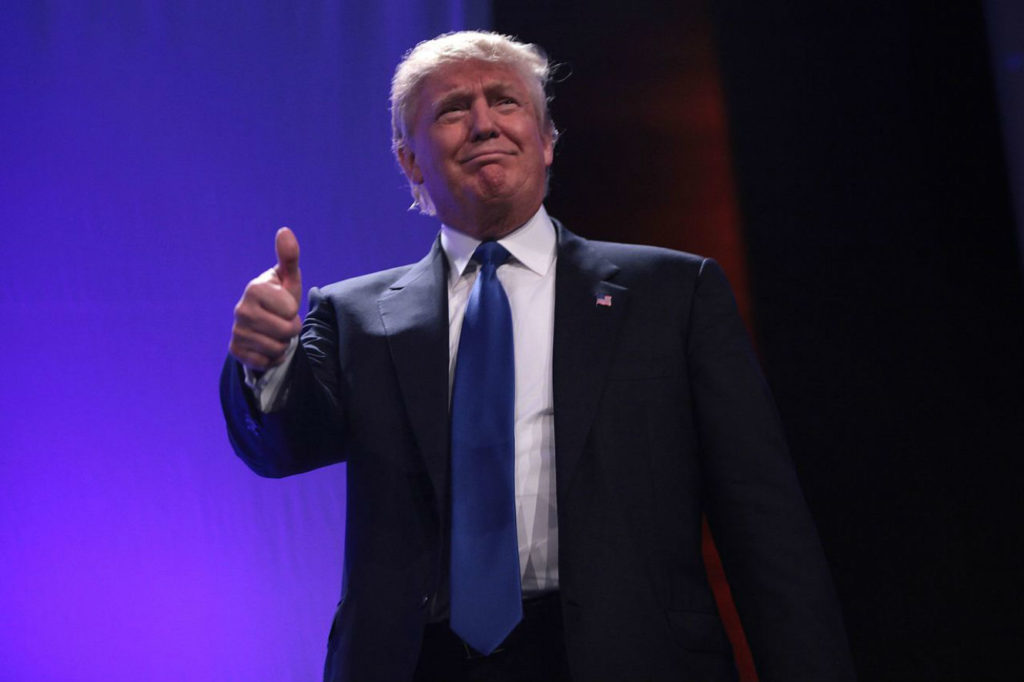How Much Will Donald Trump Really Spend on Defense?

Defense industry stocks are soaring in reaction to a clean Republican sweep of the executive and legislative branches. But how much will President-elect Donald Trump’s plan to rebuild the military actually cost? Given this will be a president who campaigned on the idea that the U.S. military should be focused on counter-terrorism as its most important mission, can this plan stay on track?
First, President Obama’s defense plan is already $113 billion over the amended Budget Control Act spending caps for the next four years. Trump and the Republican Congress will need to repeal those legal caps and add that money before turning to their own priorities. Then, the foundation of Trump’s own plan would require another $100 billion over the same four-year timeframe. Conservatively, that’s about $55 to $60 billion extra per year over four years for the meat and potatoes of a military buildup. Adding in crucial smaller programs, accounting for weapons cost growth, and returning the entire force to adequate readiness pushes the real price tag even further upward to somewhere between an additional $250 to $300 billion over four years.
By comparison, the Budget Control Act has already cut $350 billion in planned military spending relative to the budget levels recommended by Secretary Gates in 2012. In a recent exercise, the American Enterprise Institute spent $1.3 trillion over ten years, but remained unable to match the Gates plan. The only limiting factor to the proposals below is the absorptive capacity of the defense industrial base.
For the Army, Trump wants an active-duty force of 540,000 soldiers — up from the current drawdown to 450,000 — which will cost about $35 to $50 billion during his term. Congressional and service support exists for such an expansion. Based on historical accession rates, a growth rate of 15,000 soldiers per year would be both responsible and possible. The size of the total bill would depend on whether the Army expands its purchases of new-model equipment, or if it outfits these new brigades with weapons mothballed from the postwar drawdown.
For the Navy, the president-elect also wants to build a 350-ship fleet — a long-term, bipartisan task. How could he accomplish this? The Pentagon could realistically buy back six canceled Littoral Combat Ships, add two amphibious ships, and purchase one extra attack sub over the next four years for about $15 billion. The most rational way to move toward 350 ships quickly would require the Trump administration to contract for another $60 billion in procurement beyond its term. This would require continuing production of two Virginia-class attack subs per year through the 2020s even as it builds new ballistic missile subs, adding a third destroyer every year and/or investing in a new cruiser, and purchasing about ten more hulls split between amphibious vessels, logistics ships, and small surface combatants.
In the Air Force, Trump wants to move the fighter fleet toward 1,200 combat-coded aircraft from its current inventory of 1,141, which will soon dip below the Congressionally mandated floor of 1,100. Doubling the F-35A build rate would be the quickest and most efficient way to do so. That would cost about $30 billion over four years.
Lastly, Trump plans to increase the size of the active-duty Marine Corps to 200,000 from the current target of 182,000. Such an end-strength add would require at least $12 billion over four years.
Trump’s plans for the nuclear triad remain opaque. His emphasis on modernization could simply mean protecting current investments, which are already baked into Obama’s budget outlook. Likewise, his advisers have not yet detailed how their focus on missile defense will manifest. This could range from a mere $3 billion investment in an east coast Ground-Based Interceptor site to tens of billions of dollars in missile defense-related spending on high-energy lasers, new Army point defense systems, and interceptor missiles.
Yesterday, our analysis based on the most likely outcomes in the election led us to believe that very little would change for defense spending in the near future. With Trump’s winning the presidency and Republicans retaining control of Congress, the political dynamics shifted entirely. A repeal of the Budget Control Act and a substantial investment in the military now seem imminent. What remains to be seen is whether Republicans can pursue meaningful entitlement reform to render such a buildup sustainable. As a candidate who spoke favorably of leveraging debt, Trump could simply increase defense and infrastructure spending by increasing the debt. In that scenario, the sky is the limit.
Mackenzie Eaglen is a resident fellow in the Marilyn Ware Center for Security Studies at the American Enterprise Institute, where she works on defense issues. Rick Berger is a research associate at the Marilyn Ware Center.
Image: Gage Skidmore

